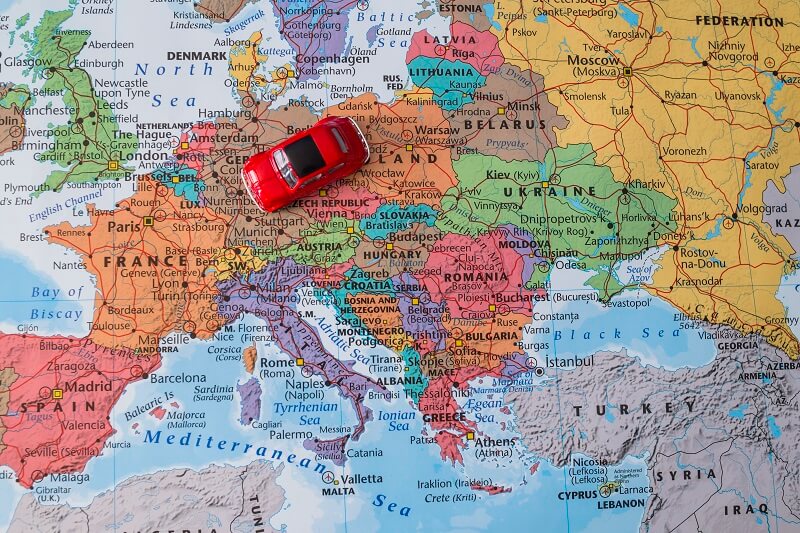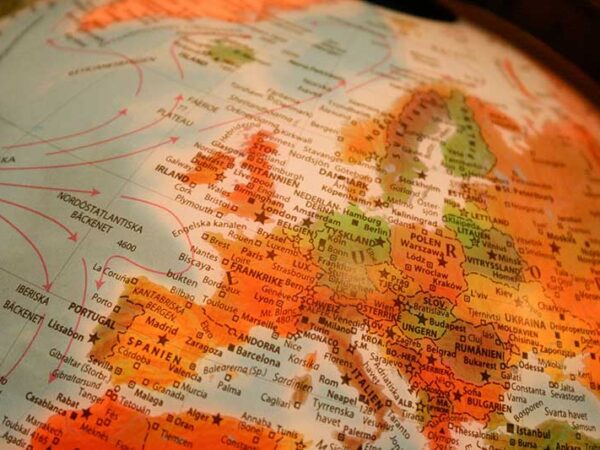In the broadest terms, the Schengen Area is an alliance of twenty-seven European countries that no longer operate border controls between each other. Citizens of any Schengen country travelling from one member state to another need not possess any form of visa or produce a passport or national identity card in order to do so. The 27 member states can be viewed as being a single country, or jurisdiction, whose citizens can move freely from one region to another as long as they remain within the Schengen Area.
European Union or Schengen Area?
Many people confuse the European Union and Schengen Area which is understandable as the two are almost identical. Both bodies have 27 member countries and the vast majority of these states are members of both the EU and Schengen.
Presently, the full list of Schengen member states is as follows:
- Austria
- Denmark
- Germany
- Italy
- Luxembourg
- Poland
- Spain
- Belgium
- Estonia
- Greece
- Latvia
- Malta
- Portugal
- Sweden
- Croatia
- Finland
- Hungary
- Liechtenstein
- The Netherlands
- Slovakia
- Switzerland
- Czech Republic
- France
- Iceland
- Lithuania
- Norway
- Slovenia
All of these countries are also part of the European Union with four exceptions. These being: Iceland, Switzerland, Norway and Liechtenstein.
In addition to the 27 full Schengen members there are three other European countries (microstates is actually a better title) which are considered Schengen states as they are difficult to reach without passing through a Schengen country. These three states are:
- San Marino
- Monaco
- Vatican City
On the flip side of the coin, there are four EU member states that are not signed up to the Schengen Agreement and these are:
- Republic of Ireland
- Bulgaria
- Cyprus
- Romania
Of these four countries, Bulgaria and Romania have applied for Schengen membership but have, thus far, been refused permission to join.
Before Schengen
In the early part of the 20h century, before World War I, many countries in Europe (and across the globe) operated on limited border controls. This meant that virtually anyone could go almost anywhere in the world with minimal identification and little scrutiny. This situation became untenable for security purposes as travel became more commonplace between the two World Wars and countries grew more concerned about who was entering their jurisdiction and why.
In Europe (where many countries border each other) the problem of unwanted and undesirable visitors led to stricter border controls, and in some cases visa requirements, being enforced. The tougher border controls were effective in policing visitors but also led to substantial delays for cross-border commercial, tourist and commuter traffic.
In 1954, the Nordic countries of Norway, Sweden, Finland, Denmark and Iceland overcame these difficulties and delays by allowing free movement of traffic and goods between the five countries without the need for passports, visas or other international clearances.
Following the success of the Nordic countries open border policy, the system was also adopted by the Benelux trio of Belgium, Netherlands and Luxembourg in 1960 and the internal borders between the countries were abolished.
During the 1950’s a number of European countries banded together to promote trade, tourism and economic development. The countries formed the European Economic Community (EEC), which soon became the Economic Community (EC) and is today called the European Union.
The Schengen Agreement
By 1985 there were ten Economic Community members and the subject of abolishing the internal borders within the community in order to facilitate travel and improve commerce was discussed. However, five of the ten member states opposed the proposal and the remaining five went their own way. On the 14th of June 1985, representatives of the five nations met in the small town of Schengen, located in the south of Luxembourg, and the original Schengen Area was confirmed consisting of five countries:
- Germany
- France
- Belgium
- Luxembourg
- The Netherlands
With just five member states covering a relatively small (albeit important) area of Europe, the Schengen Agreement made little or no difference to the greater European Community although it was of some economic benefit to the original five signatories.
Over the coming years, more EC countries signed the Schengen Agreement and, in 1990, under the Schengen Convention it was agreed to abolish internal border checks within the expanded Schengen Area with the new regulations coming into effect in 1995.
Despite the now obvious economic benefits, the United Kingdom and the Republic of Ireland (who operated a Common Travel Area between the two countries) both refused to join the Schengen Area. The Common Travel Area is similar in nature to the Schengen Agreement as Irish passport holders could travel to the United Kingdom with minimum red tape and could also enjoy an open border with Northern Ireland, which is part of the United Kingdom.
Internal Borders and Security Checks
Before the Schengen Agreement regulations came into effect, each of the member states operated its own border checkpoints and passport controls. Today, many of these internal border crossings are closed or demolished with the exception of those in countries on the outer perimeter of the Schengen Area.
Although the border checks have been mostly removed and passport checks are no longer carried out it does not mean that travellers should not carry passports, identification or travel documents. Security is a prime concern across Europe (and throughout the world) and checks can be expected. These may occur at airports, seaports, international train and coach depots and even, occasionally, at a border crossing. There is also always the possibility of border checkpoints being immediately re-opened or set up if there is good cause for so doing as was the case during the height of the coronavirus pandemic.
Border Crossings and Schengen Visas
Under the Schengen Agreement there are no internal border checks between one Schengen country and another. For all intents and purposes, the Schengen Area is one large country with one external border and it is here that intending visitors’ passports and travel documents will be checked. Once through this external border, a traveller is free to roam within the Schengen Area member states without the need to be screened at each border. The only times documentation will be checked are when leaving the Schengen Area to visit a non-Schengen country or if re-entering the area having left for any reason or period of time.
As is the norm, any foreign national wishing to enter a Schengen country will be required to possess a valid passport but no visa visa is necessary for citizens of another Schengen state or European Union member country. This is due to the fact that even those EU countries outside the Schengen Area (Ireland, Cyprus, Bulgaria and Romania) have a reciprocal agreement in place where citizens of either entity enjoy visa-free travel within both the EU and Schengen.
Currently, the same visa-free travel arrangement applies to a number of countries outside of Europe including America, Canada, Australia, China and the visa-exempt list also includes the United Kingdom despite that country’s recent withdrawal from the European Union.
Intending visitors to the Schengen Area who do not qualify under EU and Schengen citizenship laws, or are not on the visa-exempt list, are deemed to be “world travellers” and must possess the correct form of Schengen Visa before arrival in any Schengen member state.
ETIAS is Coming
First approved back in 2016, and originally scheduled to come into effect in 2021, the European Union is introducing the European Travel Information and Authorisation System (ETIAS) which is a form of electronic visa. All visitors to the EU and Schengen Area (apart from those who are visa-exempt) will need to have applied for, and received, ETIAS approval before embarking on any European venture.
Similar to a standard visa, but in electronic rather than paper format, the ETIAS is digitally linked to a passport and the approval shows up when the passport is scanned. Applying for an ETIAS is done entirely on line and approval (or refusal) is expected to be almost instantaneous. This compares favourably with the Schengen Visa application process which can take weeks to complete and requires a personal interview at the embassy concerned.
ETIAS is currently being rolled out, is expected to be fully operational in 2023 and become a mandatory requirement from the end of this year or early next year. At present, travellers of countries on the EU visa-exempt list, only require a valid passport for European travel but this is set to change in the not too distant future.
From 2023 onwards British citizens will not require a Schengen Visa to visit a Schengen member state but will require ETIAS approval. It should be noted, however, that the ETIAS requirement only applies to full British citizens as those travelling as protected persons or overseas citizens are not eligible for ETIAS and will instead require the relevant Schengen Visa.




